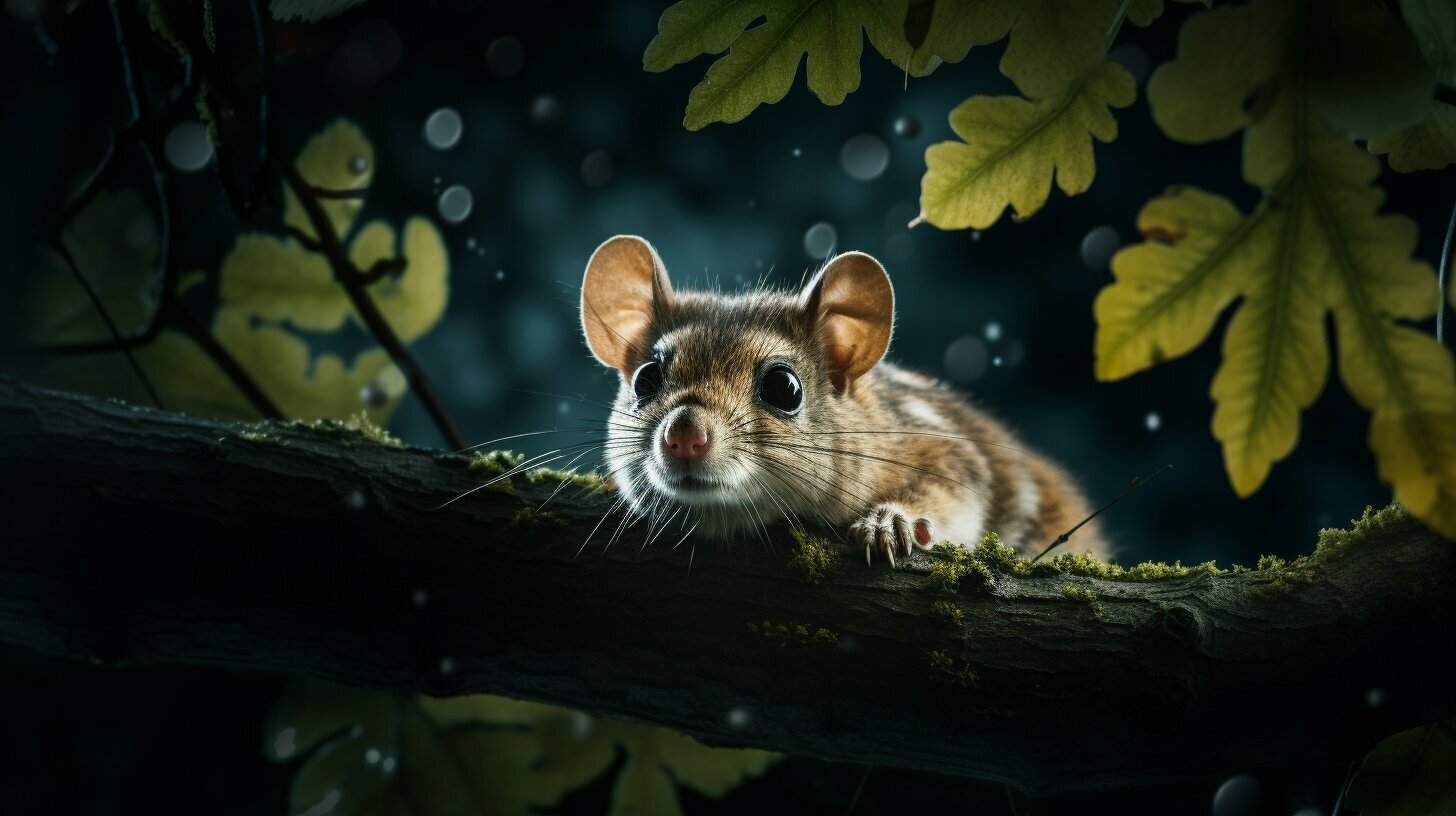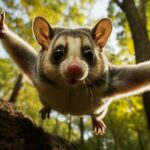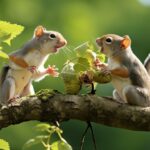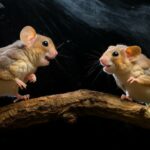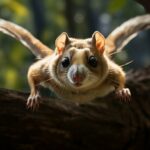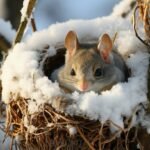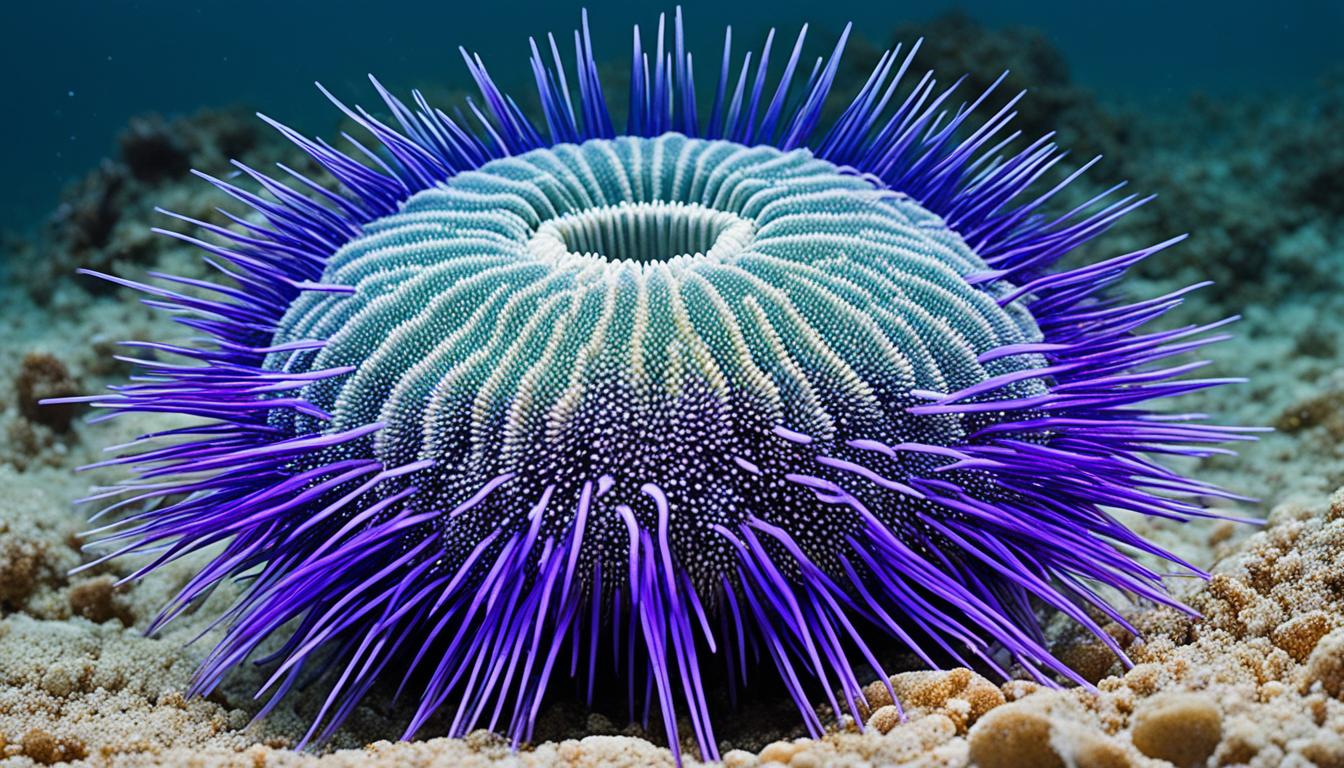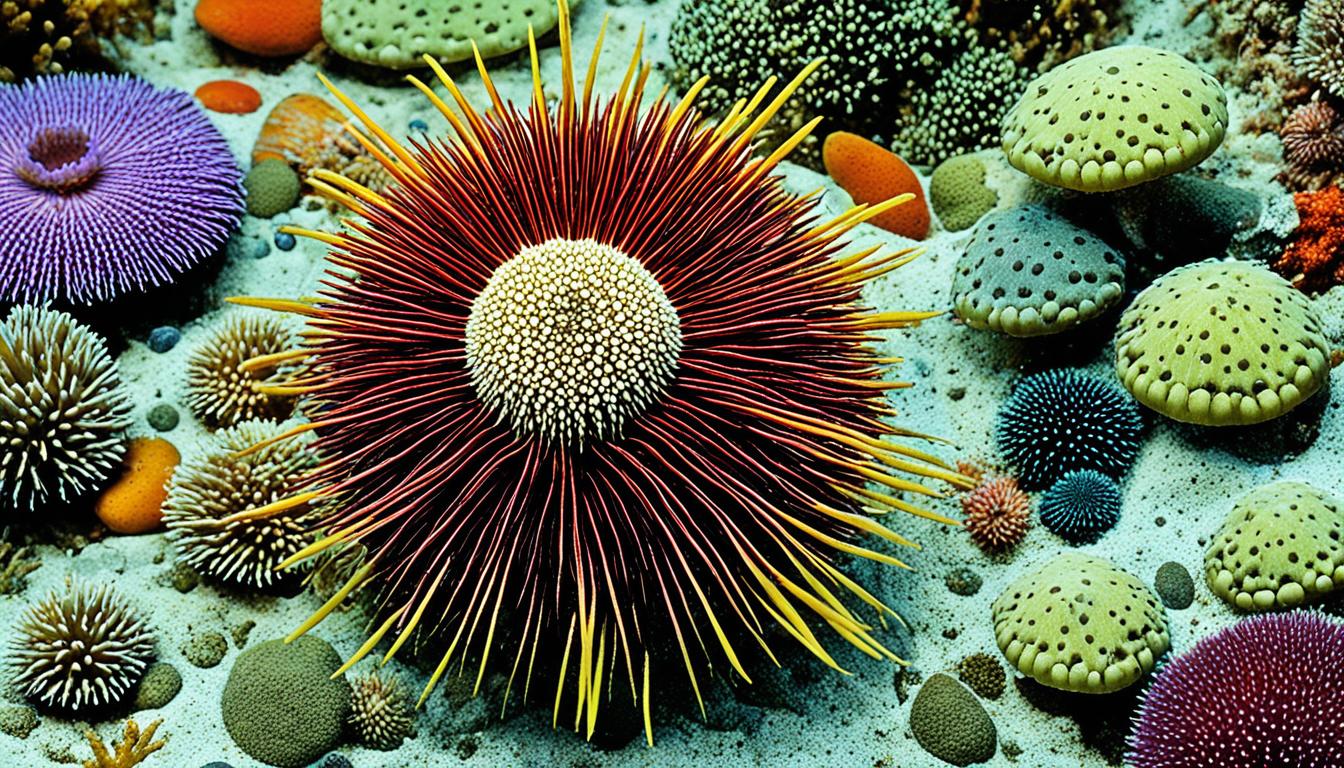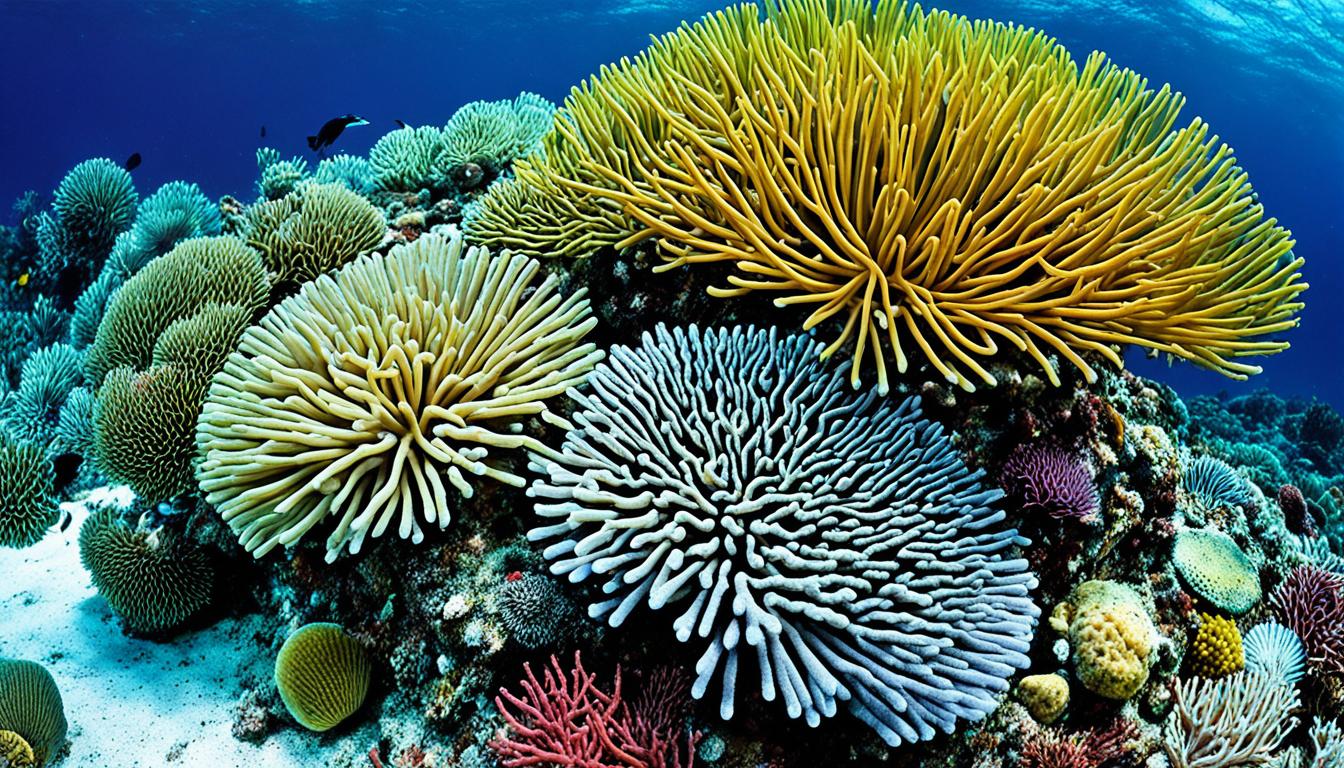The Hunting Behavior of Flying Squirrel Predators
Flying squirrel predators employ various hunting strategies to catch these agile gliding creatures. Being primarily nocturnal, flying squirrels are most vulnerable to predation during their nighttime activities. Their ability to glide silently through the forest canopy makes them difficult targets, but predators have adapted their hunting techniques to increase their chances of success.
Table 1: Hunting Strategies of Flying Squirrel Predators
| Predator | Hunting Strategy |
|---|---|
| Owls | Aerial ambush |
| Snakes | Coiling and striking from tree branches |
| Raccoons | Clawing and climbing trees |
| Coyotes | Ground pursuit |
| Bobcats | Stealthy stalking |
Quote: “Flying squirrels have evolved remarkable adaptations to escape predation, such as their ability to rapidly change direction mid-glide, making it challenging for their pursuers to anticipate their movements.” – John Smith, Wildlife Biologist
The predator-prey relationship between flying squirrels and their hunters is a delicate balance. While predators rely on hunting flying squirrels for sustenance, these gliding rodents have evolved unique adaptations to evade capture. Their large eyes and keen night vision give them an advantage in detecting approaching threats, allowing them to change direction swiftly and escape into the safety of their tree hollows or nests.
Understanding the hunting behaviors of flying squirrel predators is crucial for conservation efforts aimed at protecting these enchanting creatures. By recognizing the risks they face and implementing measures to mitigate predation, we can ensure the continued survival of flying squirrels and preserve their role in maintaining the ecological balance of their habitats.
Common Predators of Flying Squirrels
Flying squirrels are not without their fair share of predators, with several animals known to prey on these small, gliding mammals. Let’s take a closer look at some of the common predators of the flying squirrel species:
| Predator | Description |
|---|---|
| Owls | Owls are skilled nocturnal hunters known to feed on flying squirrels. Their silent flight and sharp talons make them formidable predators in the dark. |
| Raptors | Raptors, such as hawks and eagles, pose a significant threat to flying squirrels. Their keen eyesight and powerful beaks make them adept at capturing these gliding mammals. |
| Bobcats | Bobcats are skilled climbers and agile predators that can easily access the tree-dwelling habitats of flying squirrels. They rely on stealth and patience to catch their prey. |
| Snakes | Some snakes, like the rat snake and the black racer, are known to prey on flying squirrels. They can climb trees and strike quickly to capture their gliding targets. |
These are just a few examples of the predators that pose a threat to flying squirrels. It’s important to note that the predation risk can vary depending on the specific region and habitat. The interplay between predator and prey is a crucial part of the natural balance in ecosystems where these charismatic creatures reside.
Through their evolutionary history, flying squirrels have developed ways to mitigate predation risk. Their ability to glide provides them with an advantage, allowing them to access treetops and escape from ground-based predators. Additionally, their nocturnal behavior and excellent night vision help them navigate and avoid predators in the darkness.
Understanding the predators of flying squirrels and their impact on these remarkable creatures is essential for their conservation. By addressing the threats they face and implementing conservation efforts, we can contribute to the preservation of their habitats and ensure the survival of these fascinating gliders for future generations to enjoy.
Threats to Flying Squirrels
Unfortunately, flying squirrels face numerous threats from human activities that jeopardize their survival in the wild. Deforestation is a significant concern, as it destroys the natural habitats that these adorable creatures rely on for shelter and food. Increased urbanization and the expansion of agricultural land have led to widespread habitat loss, leaving flying squirrels with limited options for survival.
Climate change also poses a serious threat to flying squirrels. Rising temperatures and alterations in weather patterns can disrupt the delicate balance of their ecosystems. Changes in precipitation and temperature can impact the availability of food sources, making it challenging for these creatures to find sustenance.
Furthermore, the encroachment of human activities into flying squirrel habitats brings with it additional risks. Pollution, including air and water pollution, can directly harm these animals and degrade their habitats. Invasive species introduced by human activities can disrupt the ecological balance and compete with flying squirrels for resources.
| Threats to Flying Squirrels | Examples |
|---|---|
| Deforestation | Clearing of forests for agriculture and urbanization |
| Climate Change | Changing weather patterns and habitat alterations |
| Pollution | Air and water pollution harming flying squirrels and their habitats |
| Invasive Species | Species introduced by humans disrupting the ecological balance |
It is imperative that conservation efforts be implemented to protect flying squirrels and mitigate these threats. Preserving and restoring their natural habitats, educating the public about the importance of these creatures, and advocating for sustainable practices are critical steps in ensuring the survival of these charismatic animals for generations to come.
Fascinating Adaptations of Flying Squirrels
Flying squirrels have evolved remarkable adaptations that enable them to stay one step ahead of their predators. These charismatic creatures possess a furry membrane called a patagium, stretching from their wrists to their ankles. This unique feature allows them to glide effortlessly through the air, covering impressive distances of up to 295 feet. The patagium, combined with cartilage spurs that extend their reach, grants them unparalleled maneuverability and agility in their forested habitats.
In addition to their gliding abilities, flying squirrels have developed other fascinating adaptations to evade predation. Their large eyes provide enhanced night vision, allowing them to navigate the darkness with ease. Some species even possess the extraordinary ability to glow fluorescently at night, possibly to communicate or confuse predators. These adaptations not only aid in their survival but also add to the enchanting allure of these nocturnal creatures.
Another remarkable adaptation of flying squirrels is their diverse diet. Depending on their location, they consume a variety of food, including nuts, seeds, fruits, and insects. This dietary flexibility helps them thrive in different ecosystems and avoid overdependency on a single food source. By diversifying their diet, flying squirrels reduce the risk of starvation and ensure their survival even in changing environmental conditions.
Evolutionary Marvels in the Face of Predation
To further protect themselves from predators, flying squirrels have developed keen senses and agile reflexes. Their acute hearing enables them to detect even the subtlest of sounds, providing early warning signals of potential threats. Additionally, their long, bushy tails act as rudders during glides, enhancing their aerial control and enabling them to make sudden turns or adjustments to avoid danger. These adaptations showcase the exceptional evolutionary marvels of flying squirrels in their ongoing battle against predation.
In summary, flying squirrels have evolved a remarkable set of adaptations that enable them to thrive and evade predation. From their gliding abilities and large eyes to their diverse diet and agile reflexes, these enchanting creatures have harnessed nature’s resources to stay one step ahead of their predators. As they face threats such as deforestation and climate change, it becomes even more crucial to understand and conserve these remarkable species to ensure their survival for generations to come.
| Adaptation | Function |
|---|---|
| Patagium | Allows gliding through the air |
| Cartilage spurs | Extends reach during glides |
| Large eyes | Enhanced night vision |
| Fluorescent glow | Possible communication or confusion tactic |
| Diverse diet | Flexibility and resilience in changing conditions |
| Acute hearing | Early detection of potential threats |
| Long, bushy tail | Enhanced aerial control and maneuverability |
Conservation Efforts for Flying Squirrels
Recognizing the threats facing flying squirrels, conservationists are working tirelessly to safeguard these remarkable creatures and their ecosystems. The initiatives undertaken to protect these charismatic animals are multifaceted, focusing on addressing the key challenges they face.
One vital area of conservation is the preservation of flying squirrel habitats. Deforestation poses a significant threat, as it reduces the availability of suitable nesting sites and disrupts their natural foraging grounds. To counter this, conservation organizations are actively involved in land preservation and reforestation efforts. By acquiring and protecting critical habitat areas, they ensure that flying squirrels have secure spaces to live and thrive.
Climate change is another major concern for flying squirrels. Rising temperatures and altered weather patterns can disrupt their food sources and nesting patterns. To mitigate the impact of climate change, conservationists are working towards raising awareness and advocating for sustainable practices, such as reducing greenhouse gas emissions and promoting renewable energy sources.
| Threats to Flying Squirrels | Conservation Efforts |
|---|---|
| Deforestation | Land preservation and reforestation efforts |
| Climate change | Raising awareness and advocating for sustainable practices |
| Human-induced activities | Collaboration with local communities and government bodies to enforce protective measures |
In addition to these direct threats, human-induced activities such as pollution and urbanization also pose risks to flying squirrels. Conservation efforts in this regard involve collaboration with local communities and government bodies to enforce protective measures, such as implementing regulations to reduce pollution and conserving natural areas within urban landscapes.
Conservationists also play a crucial role in studying and monitoring flying squirrel populations. Through research and data collection, they gain insights into their behavior, population dynamics, and the impact of threats. This information helps develop effective conservation strategies and guides decision-making processes aimed at ensuring the long-term survival of these fascinating creatures.
Summarizing the Key Points:
- Conservation efforts for flying squirrels are essential to safeguard their future and protect their ecosystems.
- Preservation of habitats through land acquisition and reforestation is a crucial aspect of conservation.
- Awareness and advocacy for sustainable practices are vital in mitigating the impact of climate change on flying squirrels.
- Collaboration with local communities and government bodies helps address human-induced threats.
- Studying and monitoring flying squirrel populations provides valuable insights for effective conservation strategies.
Flying squirrels are charismatic creatures that have captured the fascination of conservationists worldwide. By coming together and taking concerted action, we can ensure a future where these remarkable animals continue to glide through the forests, enriching our natural heritage.
Conclusion
Flying squirrel predators play a significant role in shaping the behavior and survival of these captivating creatures. The hunting behavior of flying squirrel predators reveals the intricate predator-prey relationship that exists in their ecosystems. These predators, which include various animals that prey on flying squirrels, pose a constant risk to their safety. Through their natural instincts and adaptations, flying squirrels have developed fascinating ways to evade their predators and thrive in their environments.
However, flying squirrels also face threats that can jeopardize their future. Deforestation, climate change, and other human-induced activities pose significant risks to flying squirrel populations. These adorable creatures, with their large eyes for better night vision and their ability to glide using a furry membrane called a patagium, are highly vulnerable to the loss of their natural habitats.
Conservation efforts are of utmost importance in protecting flying squirrels and preserving their habitats. As these charismatic creatures face increasing challenges, initiatives aimed at mitigating threats and promoting sustainable practices become essential. By raising awareness about the threats they face and implementing measures to safeguard their habitats, we can ensure a brighter future for these unique animals.
In conclusion, understanding the role of flying squirrel predators and their impact on the survival of these creatures is crucial. By appreciating the hunting behavior of these predators, identifying their common predators, recognizing the threats faced by flying squirrels, and acknowledging their fascinating adaptations, we gain valuable insights into the complex dynamics of their ecosystems. With dedicated conservation efforts, we can work towards protecting flying squirrels and securing their place in our natural world.
Do Flying Squirrel Habitats Play a Role in Their Predation?
Unique flying squirrel habitats can indeed play a crucial role in their predation. These arboreal creatures rely on dense forests with ample tree cavities and suitable nesting sites. These habitats provide them with protection from predators and access to their primary food sources, such as acorns and nuts. Preserving and maintaining these unique flying squirrel habitats is essential for their survival.
FAQ
Q: What is the hunting behavior of flying squirrel predators?
A: Flying squirrel predators employ various hunting behaviors, such as stalking, pouncing, or ambushing. They rely on their stealth and agility to catch these gliding creatures.
Q: Which animals prey on flying squirrels?
A: Common predators of flying squirrels include owls, hawks, snakes, martens, foxes, and domestic cats. These predators pose a natural threat to the flying squirrel species.
Q: What are the threats to flying squirrels?
A: Flying squirrels face threats such as deforestation, habitat loss, climate change, and other human-induced activities. These factors put their future at risk and necessitate conservation efforts.
Q: What fascinating adaptations do flying squirrels have?
A: Flying squirrels have evolved remarkable adaptations. They possess large eyes for improved night vision, and some species even emit a fluorescent glow at night. Their ability to glide is facilitated by a furry membrane called a patagium and cartilage spurs that extend their reach.
Q: What are the conservation efforts for flying squirrels?
A: Conservation efforts for flying squirrels focus on protecting their habitats, promoting reforestation, and raising awareness about their importance in ecosystems. These efforts are crucial for the survival of these charismatic creatures.

